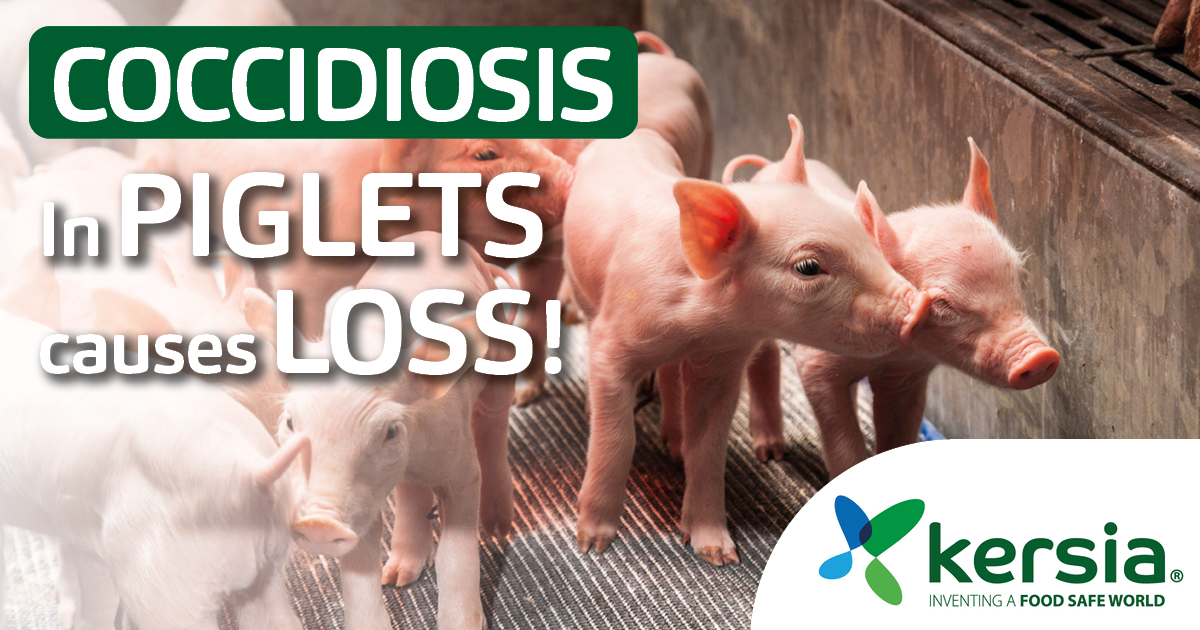Safely control coccidia in piglets
The first symptoms of coccidiosis in piglets usually appear around 4-5 days after the initial infection, and disease usually occurs around the 10th to 15th day of life. At first there are no abnormalities in the general condition of the piglets but the feces will begin to change in appearance to either; pasty-watery, yellow, or cement-coloured as well as becoming foul-smelling. In the case of a high degree of infestation, dehydration symptoms soon appear despite the desire to suck, the animals will look dirty and weight loss will be visible and as the disease progresses, the piglets grow noticeably apart. There are hardly any deaths in mono-infections, nonetheless, through a secondary colonization of the damaged intestinal epithelium (salmonella, clostridia or E. coli) the mortality rate increases.
While older piglets excrete only seldom or small amounts of oocysts, the young piglets infected for the first time (<4 weeks) are the ones who endanger siblings and subsequent litters due to the large amounts of oocysts. Coccidial oocysts that are sporulated are extremely resistant and can last for months to years in the environment. A single ingested oocyst can produce as many as 23 million new oocysts over a 28 day period, rapidly spreading disease throughout your stock.
When there does exist a special challenge such as Coccidiosis or Cryptosporidiosis caused by oocysts, it is recommended to follow a strict hygiene guideline:
- CLEANING: Thoroughly clean the shed and equipment with a strong alkaline detergent such as ULTRAFOAM, ECOFOAM ADVANCED, ECOFOAM PLUS, AGACREAM etc.
- DISINFECTION:
- Disinfect the sheds – ground walls and ceiling – with a standard broad-spectrum disinfectant such as HYRED FORCE 7, VIROSHIELD, AGACID FORTE, VIREX or FUMAGRI EFFISAFE
- Apply a second round of disinfection on the ground floor & appr. 1m up the walls with a special and targeted disinfectant such as AGAKOK 2.5 or CYCLEX, both of which are Chlorocresol based disinfectants tested and approved against oocysts.
- PROTECTION: Follow stringent protection measures, such as foot dip, hand wash & disinfection, continuous water treatment etc. to avoid secondary infections through entrance of other pathogens to your shed.
Only by using AGAKOK 2.5 with a 2%, or CYCLEX with a 3%, application rate in the second step of a two round disinfection program, are you able to successfully lower coccidia pressure. This disinfection program’s success is supported by meticulous attention to detail in the essential step of the cleaning of the farrowing units and continuous protection by keeping clothing and equipment clean and disinfected. It is the best way to protect the litter from Porcine isosporosis, also known as “10-day diarrhoea”.

